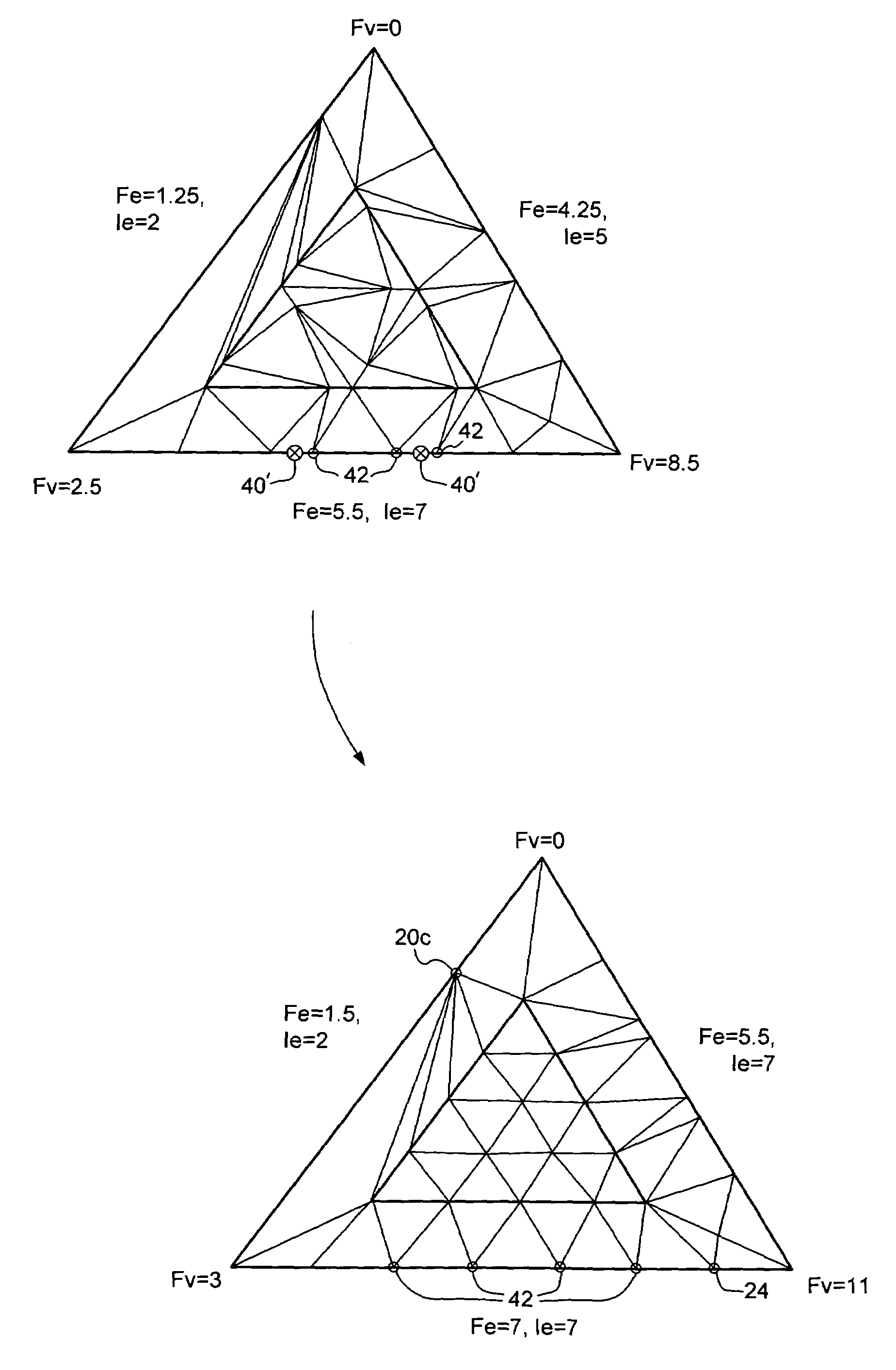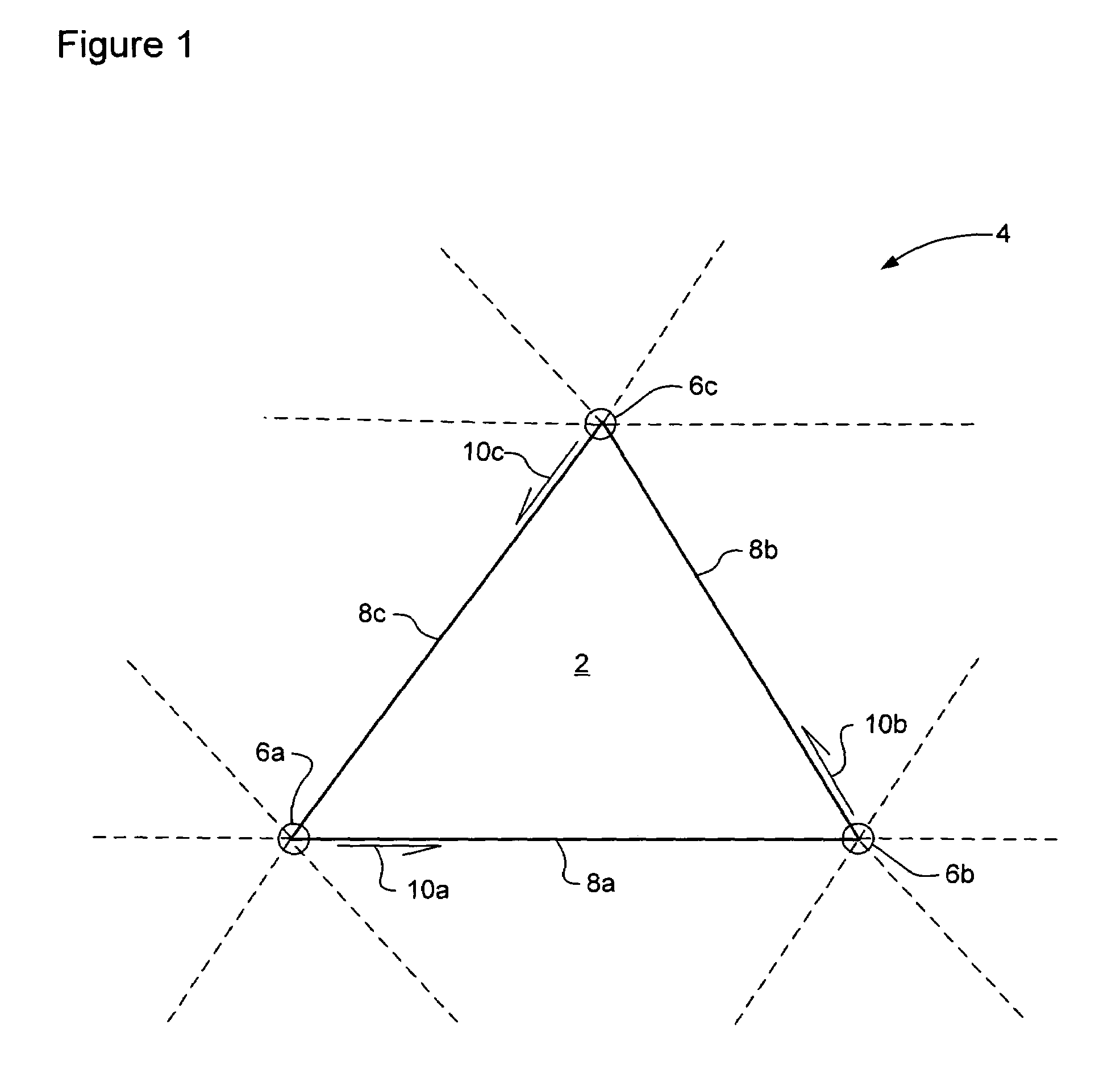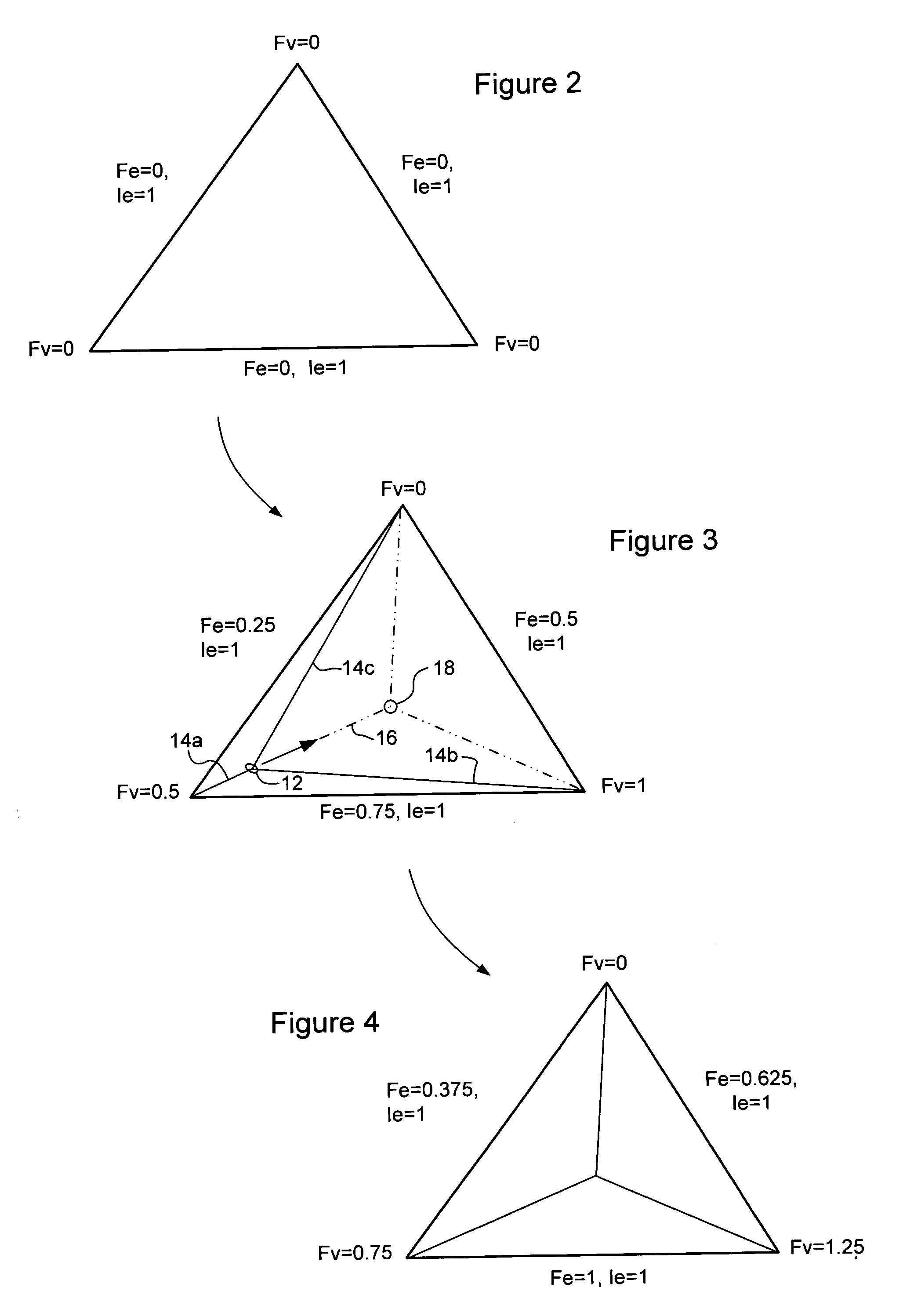Dynamic tessellation of a base mesh
a dynamic tessellation and mesh technology, applied in the field of rendering graphical images, can solve the problems of more processor resources, longer time requirements, and increased processing resources, and achieve the effect of preventing cracking and efficient utilization of processing resources
- Summary
- Abstract
- Description
- Claims
- Application Information
AI Technical Summary
Benefits of technology
Problems solved by technology
Method used
Image
Examples
Embodiment Construction
[0027]The present invention provides a method of tessellating a base mesh consisting of a plurality of base vertices interconnected by base mesh edges defining polygonal primitives of the base mesh. FIG. 1 schematically illustrates a base mesh primitive 2 within an exemplary base mesh 4. As shown in FIG. 1, the primitive 2 is defined by a respective set of base mesh vertices 6 that are interconnected by base mesh edges 8.
[0028]In general, the base mesh 4 may be composed of primitives 2 of any arbitrary shape. However, for computational efficiency and versatility, triangular primitives are preferred. In this case, the base mesh 4 can be provided as an arbitrary mesh of triangular primitives 2, defined by a base vertex array and connectivity information in the form of a primitive list. In order to prevent cracking, T-junctions within the base mesh 4 should be avoided. In addition, improved image rendering may be obtained by defining the base vertex array and primitive list such that t...
PUM
 Login to View More
Login to View More Abstract
Description
Claims
Application Information
 Login to View More
Login to View More - R&D
- Intellectual Property
- Life Sciences
- Materials
- Tech Scout
- Unparalleled Data Quality
- Higher Quality Content
- 60% Fewer Hallucinations
Browse by: Latest US Patents, China's latest patents, Technical Efficacy Thesaurus, Application Domain, Technology Topic, Popular Technical Reports.
© 2025 PatSnap. All rights reserved.Legal|Privacy policy|Modern Slavery Act Transparency Statement|Sitemap|About US| Contact US: help@patsnap.com



